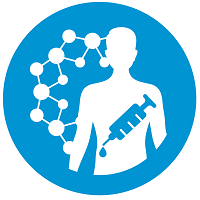Preclinical, Clinical, and Translational Sciences
Symposium: Advances and Case Examples of In Silico Modeling for Drug Development
Perspectives on PCR-Based Cellular Kinetics and Biodistribution in Cell Therapy
Monday, November 10, 2025
10:30 AM - 11:00 AM CT
Location: 225 CD

Nanda Balasubramanian, PhD (he/him/his)
Associate Director
BMS
Cambridge
Speaker(s)
A growing number of chimeric antigen receptor (CAR) T-cell therapies have been developed and investigated in clinical studies, with several FDA-approved therapies targeting CD19 and BCMA antigens on hematological malignancies. To further expand the indication to solid tumors and autoimmune diseases, the new generation CAR T-cell therapies have been investigated to explore new tumor-associated antigens, allogeneic options, and cytokine armoring strategies etc., to overcome the current limitations including safety concerns, relapse rates, tumor microenvironment challenges, patient accessibility and manufacturing complexities. Two common safety concerns in adoptive cell therapies are cytokine release syndrome (CRS) and immune effector cell-associated neurotoxicity syndrome (ICANS), primarily triggered by IL-1 and IL-6. The severity of CRS and ICANS were correlated with the higher expansion of CAR T-cells. Therefore, cellular kinetics in the systemic circulation and biodistribution to the targeted or non-targeted tissues are critical in understanding the efficacy and safety of cell therapy as “a living drug” within the body. Recently, droplet digital PCR has emerged as a critical tool in cell and gene therapy for transgene quantification with higher sensitivity, specificity, reproducibility, and absolute quantification, and end-point PCR enables higher tolerance in PCR inhibition. In the meantime, several unique challenges remain to be addressed for the cellular kinetics and biodistribution study depending on the program stage, types of immune cells and target indication (hematological vs. solid tumors).
The American Association of Pharmaceutical Scientists (AAPS) Gene and Cell Therapy Products (GCTPs) cellular kinetics and biodistribution assay subteam (PCR) has recently formed with experts from biopharmaceutical and CRO industry. In this panel, we will discuss the current challenges and considerations of PCR-based cellular kinetics and biodistribution assessment (i.e., primer/probe design, reference gene, reference materials, genomic DNA extraction, reporting units, method qualification/validation and in life study design etc.). The fit-for-purpose approach should be taken depending on the stage of the program, the innate immune cell subsets (conventional αβ T-cells, innate NK or γδ T-cells etc.) and target indication (hematological vs. solid tumors) to support the research grade and pivotal pharmacology and toxicology studies for the regulatory filing.
The American Association of Pharmaceutical Scientists (AAPS) Gene and Cell Therapy Products (GCTPs) cellular kinetics and biodistribution assay subteam (PCR) has recently formed with experts from biopharmaceutical and CRO industry. In this panel, we will discuss the current challenges and considerations of PCR-based cellular kinetics and biodistribution assessment (i.e., primer/probe design, reference gene, reference materials, genomic DNA extraction, reporting units, method qualification/validation and in life study design etc.). The fit-for-purpose approach should be taken depending on the stage of the program, the innate immune cell subsets (conventional αβ T-cells, innate NK or γδ T-cells etc.) and target indication (hematological vs. solid tumors) to support the research grade and pivotal pharmacology and toxicology studies for the regulatory filing.
Learning Objectives:
- Participants will be able to identify the challenges and considerations of droplet digital PCR-based cellular kinetics and biodistribution assessment to support autologous and allogeneic cell therapy programs
- Participants will be able to understand the importance of the fit-for-purpose approach to characterize the cellular kinetics and biodistribution given the complexity of state-of-the-art adoptive cell therapies.
- Participants will be able to learn the current regulatory requirements and gaps in supporting the new generation of adoptive cell therapies including some case studies.

